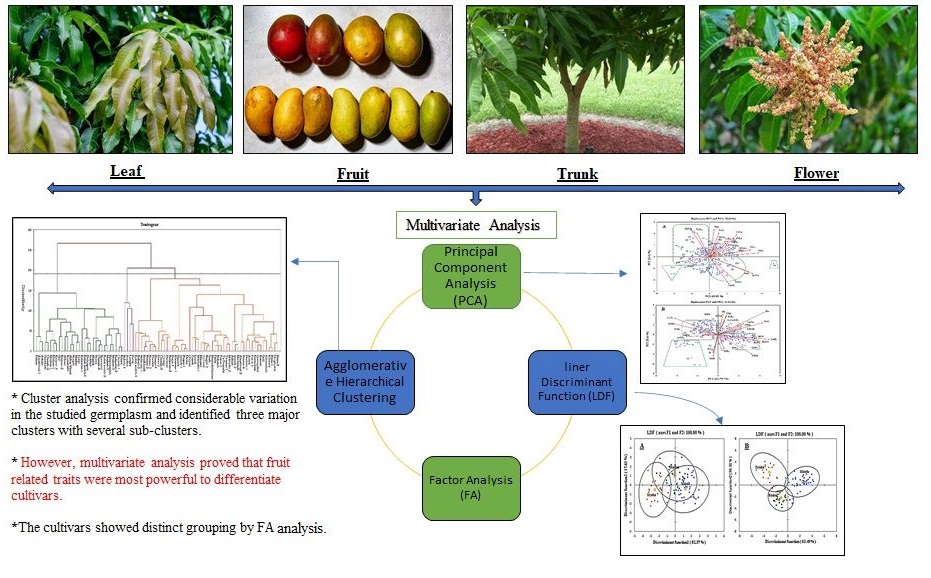Morphological and biochemical classification of Iranian Mango germplasm collection by multivariate analysis: Implications for breeding

Published 2020-10-09
Keywords
- cluster grouping,
- factor analysis,
- genetic variability,
- mango fruit,
- principal component
How to Cite
Abstract
This study was conducted at southern Iran with the aim to evaluate the phenotypic diversity of 84 mango cultivars by using morphological and biochemical traits. Two other industrial cultivars ‘Longra’ and ‘Senderi’ used as control of the study. Descriptive results indicated that the value of both quantitative and qualitative variables all the cultivars were lower than the ‘Senderi’. The variability among cultivars was highly significant in the measured traits. The fruit weight, fruit length, stone weight, stone length, fruit beak, dry matter, and petiole length showed highly discriminating power. Pearson’s correlation analysis revealed high variability due to the existence of significant positive and negative correlations among traits. Agglomerative hierarchical clustering confirmed remarkable variation in the studied germplasm and identified three major clusters with several subclusters. The 80.20, 70.11, and 100% of the quantitative variability was explained by principal component analysis (PCA), factor analysis (FA), and liner discriminant function (LDF) where fruit descriptors contributed most of the total variation, respectively. However, multivariate analysis proved that fruit related characters were most powerful to differentiate cultivars. The cultivars displayed distinct grouping by FA and LDF compared to PCA. The results revealed that the Iranian mango germplasm has a high potential for specific breeding project regarding fruit size and quality that should be further completed by a molecular marker analysis.





